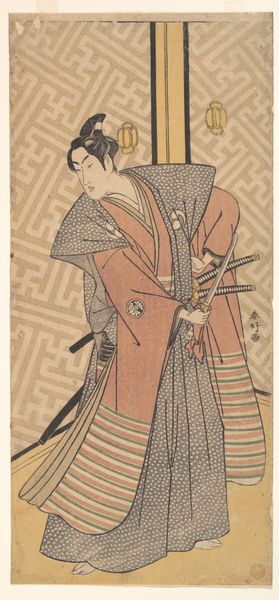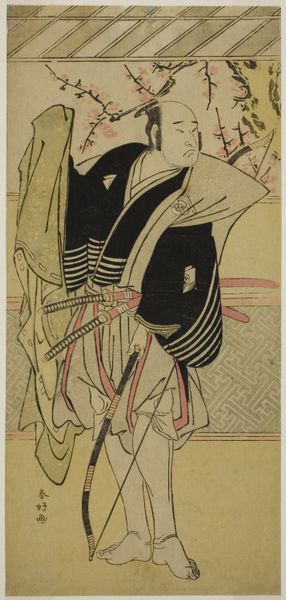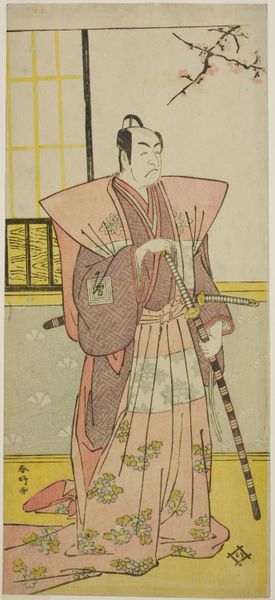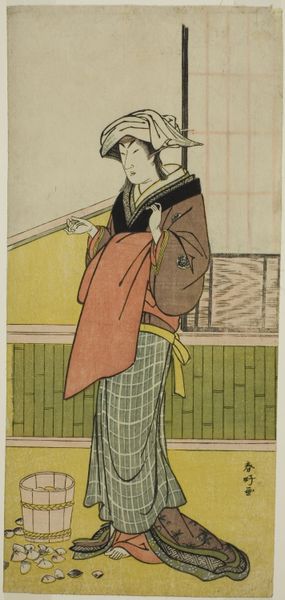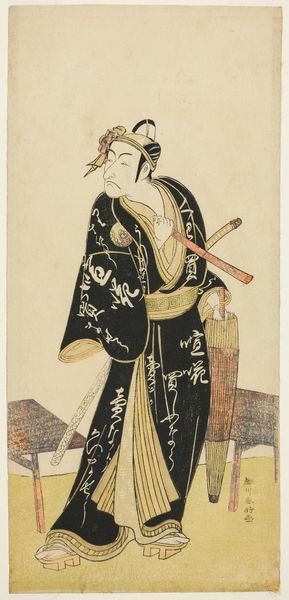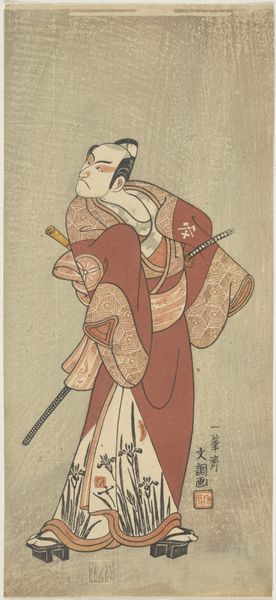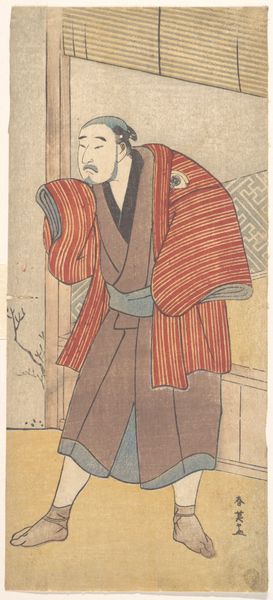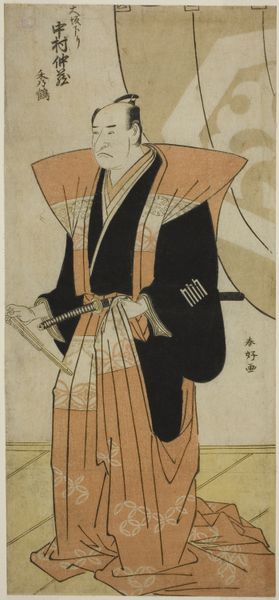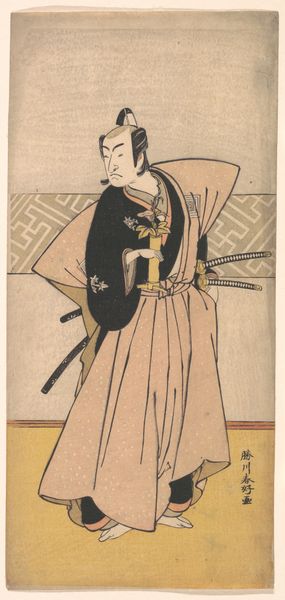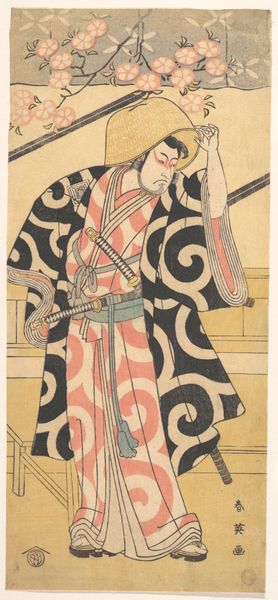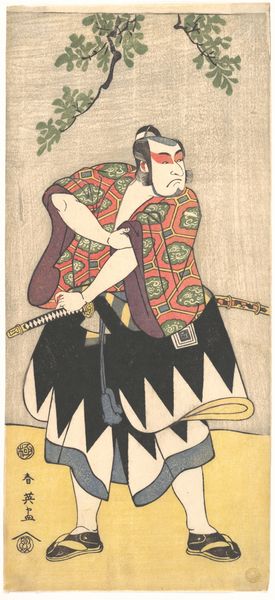
Unidentified Actor (possibly Yoshizawa Ayame) as a Woman with a Sword 1783 - 1803
0:00
0:00
print, woodblock-print
#
portrait
# print
#
asian-art
#
ukiyo-e
#
figuration
#
woodblock-print
#
history-painting
#
sword
Dimensions: H. 12 7/8 in. (32.7 cm); W. 6 in. (15.2 cm)
Copyright: Public Domain
Editor: We're looking at a woodblock print, “Unidentified Actor (possibly Yoshizawa Ayame) as a Woman with a Sword,” created by Katsukawa Shun'ei sometime between 1783 and 1803. I’m struck by the theatricality of the piece, particularly how the bold stripes on the robe contrast with the softer floral pattern in the background. What can you tell us about the context in which this was made? Curator: Ukiyo-e prints like this one weren't just art; they were a key part of Edo period popular culture. Think of them as celebrity endorsements, early forms of mass media showing actors in their famous roles, which circulated widely amongst the growing merchant class. What do you notice about the setting? Editor: It looks like an interior, but it's almost like a stage set. Sparse but evocative. Curator: Exactly. The print uses limited perspective, focusing on the figure to create a strong, recognizable image. The identity of the actor is significant here. Kabuki theater, with its stylized performances, held specific social meanings, especially when women were portrayed by men, challenging conventional gender roles in the public sphere. How might an audience at the time have perceived this? Editor: It’s interesting how this print offered a mediated experience of the theater, making it accessible beyond the performance itself. Curator: Precisely. These prints were affordable, shareable images. In the Tokugawa period the increasing power and influence of merchant classes led to flourishing culture, of which ukiyo-e became the emblem. Shun’ei wasn’t just capturing an image; he was participating in, and shaping, a vibrant media landscape. Editor: So, this wasn't just about art; it was about celebrity, accessibility, and a changing social structure! I never thought of it that way. Thanks for opening my eyes to that. Curator: Absolutely. It is essential to look beyond aesthetics, and consider how societal power structures affect artistic creations. These works show how art became deeply embedded in social and political life.
Comments
No comments
Be the first to comment and join the conversation on the ultimate creative platform.
